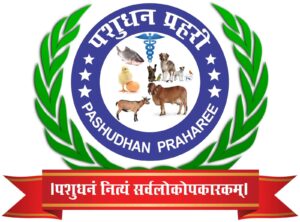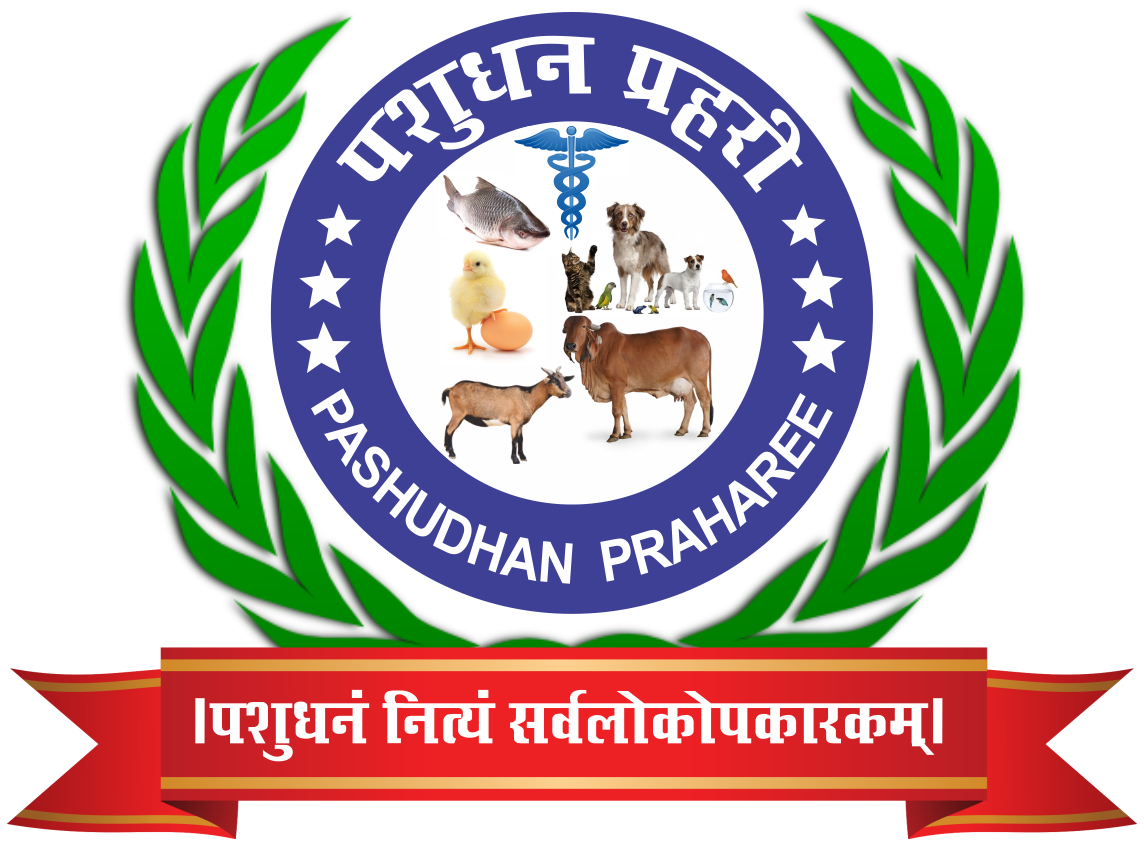Step-by-Step Guide to Veterinarian for Collecting and Dispatching Banned Meat Samples to Forensic Laboratories in India
The illegal slaughter and trade of banned meat, particularly from animals protected under the Wildlife (Protection) Act, 1972 or cattle under specific state laws, is a serious concern in India. Such crimes pose a threat to public health, animal welfare, and biodiversity. Law enforcement agencies, veterinary officers, and animal welfare activists often work in coordination to seize suspected meat during raids. However, proper sample collection, preservation, and dispatch to forensic laboratories is crucial to establish the nature of the meat and ensure successful prosecution in court.
This blog outlines a standardized step-by-step protocol for the collection and dispatch of banned meat samples for forensic examination, in accordance with legal and scientific best practices in India.
Step-by-Step Procedure
 Step 1: Scene Documentation
Step 1: Scene Documentation
Before touching or removing any meat sample:
- Take photographs and videos of the crime scene from different angles.
- Note down key observations: location, quantity of meat, packaging, smell, color, presence of blood, etc.
- Record GPS coordinates and time/date.
- Identify and document any suspects or eyewitnesses.
 Step 2: Inform Veterinary Officer
Step 2: Inform Veterinary Officer
- Immediately inform the local veterinary officer or government veterinarian for scientific assessment and sample collection.
- If unavailable, contact the nearest Animal Husbandry Department or District Veterinary Hospital.
 Step 3: Personal Protective Equipment (PPE)
Step 3: Personal Protective Equipment (PPE)
Before handling the meat, the collector should wear:
- Disposable gloves
- Face mask
- Lab coat or apron
- Goggles (if needed)
This helps avoid contamination and ensures biosafety.
Step 4: Sample Collection
 What to Collect:
What to Collect:
- Minimum 200–250 grams of the seized meat (preferably with skin, if available).
- If available, collect both raw and cooked meat, bone fragments, and other related evidence.
 Tools Required:
Tools Required:
- Sterile scalpel or knife
- Clean containers (preferably sterile plastic zip-lock pouches or screw-cap containers)
- Labels and permanent marker
- Icebox or cool storage for transport
 Step 5: Labelling and Sealing
Step 5: Labelling and Sealing
Each sample container must be labeled with:
- Case/Seizure number
- Date and time of collection
- Collector’s name and designation
- Location of seizure
- Suspected species (if known)
Seal the container with tamper-proof evidence tape or wax seal (if required) and signature of the officer. Use chain of custody forms for accountability.
Step 6: Preservation & Storage
- Meat samples must be preserved under refrigeration (4°C) if being dispatched within 24 hours.
- For longer delays, deep freezing (-20°C) is recommended.
- Use ice packs or dry ice for maintaining the cold chain during transport.
Step 7: Documentation for Forensic Lab
Prepare the following documents to accompany the sample:
- Forwarding Letter from the Investigating Officer or Veterinary Officer
- Sample Collection Certificate
- Chain of Custody Form
- FIR copy or GD Entry Number
- Photographs of the seizure scene
- Identity and contact details of the investigating agency
Step 8: Dispatch to the Forensic Laboratory
- Preferably use government courier, official messenger, or police escort for dispatch.
- Ensure sample reaches an authorized forensic laboratory, such as:
- Central Forensic Science Laboratory (CFSL)
- State Forensic Science Laboratory (SFSL)
- Regional Forensic Veterinary Lab (where available)
- Indian Veterinary Research Institute (IVRI), Bareilly (for species identification)
Notify the lab in advance about the dispatch.
Step 9: Follow-Up & Lab Communication
- Stay in regular contact with the lab to track the status of analysis.
- Ensure the Forensic Report (FSL Report) is officially collected and recorded by the Investigating Officer.
- Veterinary Officer may assist in interpreting technical findings, such as DNA analysis, histopathology, or PCR results indicating species origin.
Legal Framework Involved
- Prevention of Cruelty to Animals Act, 1960
- Wildlife Protection Act, 1972
- State-specific Cattle Slaughter Acts
- IPC Sections 428, 429, 379, 411, 120B etc.
- Food Safety and Standards Act, 2006 – if meat is for human consumption
Why Proper Procedure Matters?
- Helps in scientific identification of species (bovine, dog, wild animals, etc.)
- Ensures evidence is admissible in court
- Protects officers from legal counter-claims or contamination allegations
- Promotes animal welfare and public trust
- Strengthens prosecution against illegal meat trade mafias
Best Practices





Type of container, preservative, and quantity required for dispatching banned meat samples to forensic laboratories in India:

| Sample Type | Recommended Container | Notes |
| Raw Meat | – Sterile, leak-proof plastic screw-cap container – Food-grade zip-lock pouch – Airtight glass jar (if plastic not available) |
Should be clean, dry, and tamper-proof |
| Cooked Meat | Same as above | Especially important for verifying cooked illegal meat |
| Bone/Teeth Samples | Clean paper envelope or plastic vial | Avoid direct contact with hand |
| Hair/Fur/Feathers | Dry paper envelope with seal | Ensure no contamination |


| Sample Type | Preservative | Notes |
| Fresh Raw Meat | No chemical preservative → Use refrigeration (4°C) or freezing (-20°C) |
Avoid chemical preservatives if DNA or histopathology is needed. |
| Cooked/Decomposed Meat | 10% formalin (formaldehyde) – if DNA test not needed | For tissue fixation; not suitable for molecular testing (PCR/DNA) |
| Blood (if collected) | EDTA vial for DNA, or plain vial for serum | Preserve in cold chain |
| Feathers/Bones | Dry, no preservative needed | Keep dry and uncontaminated |


| Sample Type | Ideal Quantity | Remarks |
| Meat (raw/cooked) | 200–250 grams | Preferably with skin/fat if possible |
| Bone/Tissue Fragment | 1–2 small pieces (2–3 inches) | Must be properly labeled |
| Hair/Feathers | ~10–20 strands | Preferably with follicles for DNA |
| Blood | 5–10 ml in EDTA vial | Optional, if required for advanced testing |

- Always send duplicate samples (one for analysis, one as control sample for court).
- Ensure cold chain is maintained using icebox with ice packs or dry ice during transport.
- Avoid any contact between different sample types to prevent cross-contamination.
Vetero-Legal Documentation & Formalities for Seized Banned Meat Samples
When dealing with suspected banned meat seizures (e.g., cow slaughter, wild animal meat), a government veterinarian plays a crucial role in the legal chain. Proper documentation ensures legal admissibility, maintains the chain of custody, and prevents case rejection in court due to technicalities.
 1. Intimation/Request Letter from Police
1. Intimation/Request Letter from Police
- The local police station (or any law enforcement agency) must send a formal requisition letter to the concerned government veterinary officer requesting examination and sample collection.
- This letter must contain:
- Case FIR No. & Date
- Place and time of seizure
- Name of accused (if known)
- Name and designation of investigating officer
 2. Entry in Vetro-Legal Case Register (Form No. 8)
2. Entry in Vetro-Legal Case Register (Form No. 8)
- A vetro-legal register must be maintained by the veterinarian.
- Each case should be logged with:
- Serial number
- Date of case receipt
- Police station name
- FIR number
- Accused name (if any)
- Description of sample received
 3. Veterinary On-Spot Investigation Report
3. Veterinary On-Spot Investigation Report
The veterinarian must visit the location (if needed) or examine the meat sample and issue a Preliminary Veterinary Certificate mentioning:
Contents of the Report:
- Details of meat (species suspected, condition, odor, color, type – raw/cooked)
- Approximate weight
- Visible marks suggesting animal type (skin, hair, bone, hoof fragment, etc.)
- Nature of packaging (if applicable)
- Opinion (suspected meat of bovine/wild animal, etc.)

 4. Sample Collection & Forwarding Report (Chain of Custody Form)
4. Sample Collection & Forwarding Report (Chain of Custody Form)
Before dispatching to the Forensic Lab, complete a Sample Forwarding Form containing:
- Case FIR No.
- Name of forwarding officer (vet)
- Description of sample (meat/bone/hair)
- Sample quantity
- Packaging and labeling details
- Date and time of collection
- Name of the lab to which sent
- Signature of police and vet with date
 5. Chain of Custody Maintenance
5. Chain of Custody Maintenance
- Seal the sample container in presence of police officer & veterinarian.
- Use tamper-proof seal with label stating:
- Case number
- Date
- Sample ID
- Signature of vet & police
- Label must match the forwarding note.

 6. Dispatch Letter to Forensic Lab
6. Dispatch Letter to Forensic Lab
- Send the sample with an official cover letter on government letterhead to the forensic lab (e.g., FSL, RFSL, or Animal Forensic Unit).
- Attach:
- Police requisition copy
- Preliminary vet report
- Chain of custody form
- Seizure memo (if applicable)
 7. Receipt from Lab
7. Receipt from Lab
- Ensure the receiving authority at the lab gives an acknowledgment or receipt.
- Retain this in the vetro-legal file.
- Lab report, once received, must be forwarded to the investigating officer with a cover note from the vet.
 8. Expert Testimony (if required)
8. Expert Testimony (if required)
- The vet may be summoned to court to depose about the sample, collection process, and findings.
- Ensure all documentation is complete and safely preserved for legal proceedings.
 List of Key Documents to be Maintained:
List of Key Documents to be Maintained:
| S. No. | Document |
| 1. | Police requisition/FIR copy |
| 2. | Entry in vetro-legal register |
| 3. | Preliminary Veterinary Examination Report |
| 4. | Chain of Custody Form / Sample Collection Register |
| 5. | Sample forwarding letter to forensic lab |
| 6. | Seizure memo (by police) |
| 7. | Receipt/acknowledgement from forensic lab |
| 8. | Copy of lab analysis report |
| 9. | Covering letter while forwarding report to IO |
 Legal Acts Involved:
Legal Acts Involved:
- Prevention of Cruelty to Animals Act, 1960
- Indian Penal Code (sections on public health or misbranding)
- Wildlife Protection Act, 1972 (if wild meat is suspected)
- Cow Slaughter Acts (State-specific – Jharkhand has a complete ban)
- Food Safety & Standards Act, 2006
Vetero-Legal Sample Documentation Templates for Banned Meat Seizure Cases
- Format: Preliminary Meat Examination Report (Veterinary Certificate)
Government Veterinary Officer Report
Department of Animal Husbandry & Veterinary Services
District: ___________ Block: ___________
Subject: Preliminary Examination Report of Seized Meat Sample
FIR No.: ___________ Police Station: ___________
Date of Seizure: ___________ Date of Report: ___________
Details of Veterinary Officer:
Name: ______________________
Designation: __________________
Mobile No: _______________
Details of Investigating Officer:
Name: ______________________
Designation: ________________
Mobile No: _______________
Sample Description:
- Type of sample: Meat / Bone / Skin / Hair (tick as applicable)
- Quantity: ___________ grams
- Appearance: Raw / Cooked / Frozen
- Odour: ________
- Colour: ___________
- Packaging Condition: ___________
Veterinary Opinion:
Based on gross physical examination, the sample appears to be suspected meat of __________ species. Final confirmation to be done by authorized forensic laboratory.
Recommendations:
- Sample sealed and forwarded to: _____________________ Forensic Laboratory
- Requires further histopathological/DNA/fatty acid/serological examination
Signature of Veterinary Officer
(Signature, Name, Designation, Seal)
Date: ___________
- Format: Chain of Custody Form (Sample Collection Register)
CHAIN OF CUSTODY FORM FOR VETRO-LEGAL SAMPLE
Case No.: ________ | FIR No.: ________ | Police Station: ____________
Date & Time of Collection: ____________
| Step No. | Person in Custody | Designation | Date & Time | Remarks/Signature |
| 1 | Sample Collected by | Dr. ____________ (Veterinarian) | __________ | Initial Collection |
| 2 | Handed Over to | SI/IO ____________ | __________ | Sealed for Dispatch |
| 3 | Received by Lab | ____________ (Forensic Lab Staff) | __________ | Received Intact |
Sample Details:
- Sample ID Code: ____________
- Container Type: ____________ (e.g., Sterile plastic/glass jar)
- Preservative Used: ____________ (e.g., 10% formalin/ice pack/frozen)
- No. of Containers: ____________
Seal No./Marking: ____________
Signature of Veterinarian: _____________________
Signature of Police Officer: ____________________
- Format: Sample Forwarding Letter to Forensic Lab
On Official Letterhead of Veterinary Department
To,
The Director / In-charge,
[Name of the Forensic Laboratory]
[Address]
Subject: Forwarding of Suspected Banned Meat Sample for Forensic Examination
Sir/Madam,
With reference to FIR No. ________ dated ________ registered at ___________ Police Station, a sample of suspected banned meat was collected and sealed under my supervision. The sample is hereby forwarded for detailed forensic examination.
Details of the Case:
- Police Station: ___________________________
- FIR No.: ____________ Date: ____________
- Name of IO: ___________________________
- Seizure Date: __________________________
- Place of Seizure: _______________________
Details of Sample:
- Description: ___________________________
- Quantity: _____________________________
- Type of Preservation: ___________________
- Container Details: ______________________
- Seal No./Marking: ______________________
Documents Enclosed:
- Copy of FIR / Police Requisition Letter
- Preliminary Veterinary Report
- Chain of Custody Form
You are requested to conduct appropriate forensic analysis and submit the report to the Investigating Officer directly under intimation to this office.
Thanking you,
Yours sincerely,
[Signature]
Dr. _______________________
Veterinary Officer
[Block/District], Jharkhand
Seal: ______________________
Contact: ____________________
प्रतिबंधित मांस जब्ती मामलों के लिए पशु-वैज्ञानिक दस्तावेज़ीकरण फॉर्मेट (हिंदी संस्करण)
- प्रारंभिक मांस परीक्षण रिपोर्ट का प्रारूप (पशु चिकित्सीय प्रमाणपत्र)
राज्य पशु चिकित्सा पदाधिकारी की रिपोर्ट
पशुपालन एवं पशु चिकित्सा सेवाएं विभाग
जिला: ___________ प्रखंड: ___________
विषय: जब्त किए गए मांस नमूने की प्रारंभिक जांच रिपोर्ट
एफआईआर संख्या: ___________ थाना: ___________
जब्ती तिथि: ___________ रिपोर्ट की तिथि: ___________
पशु चिकित्सक का विवरण:
नाम: ______________________
पदनाम: __________________
मोबाइल नंबर: _______________
जांच अधिकारी का विवरण:
नाम: ______________________
पदनाम: ________________
मोबाइल नंबर: _______________
नमूने का विवरण:
- नमूने का प्रकार: मांस / हड्डी / त्वचा / बाल (सही विकल्प पर टिक करें)
- मात्रा: ___________ ग्राम
- रूप: कच्चा / पका हुआ / जमी हुई अवस्था
- गंध: ________
- रंग: ___________
- पैकिंग की स्थिति: ___________
पशु चिकित्सीय राय:
सामान्य भौतिक जांच के आधार पर, यह नमूना __________ प्रजाति के मांस का संदेह प्रतीत होता है। अंतिम पुष्टि अधिकृत फोरेंसिक प्रयोगशाला द्वारा की जाएगी।
सिफारिशें:
- नमूना सील कर भेजा गया: _____________________ फॉरेंसिक प्रयोगशाला को
- आगे की हिस्टोपैथोलॉजी / डीएनए / फैटी एसिड / सेरोलॉजिकल जांच की आवश्यकता
पशु चिकित्सक के हस्ताक्षर
(हस्ताक्षर, नाम, पदनाम, मुहर)
तिथि: ___________
- नमूना नियंत्रण प्रपत्र (चेन ऑफ कस्टडी फॉर्म)
पशु-वैज्ञानिक नमूना हेतु चेन ऑफ कस्टडी फॉर्म
मामला संख्या: ________ | एफआईआर संख्या: ________ | थाना: ____________
नमूना संग्रहण की तिथि व समय: ____________
| क्रम | अभिरक्षा में व्यक्ति | पदनाम | तिथि/समय | टिप्पणी/हस्ताक्षर |
| 1 | संग्रहकर्ता | डॉ. ____________ (पशु चिकित्सक) | __________ | प्रारंभिक संग्रहण |
| 2 | सौंपा गया | सब-इंस्पेक्टर/आईओ ____________ | __________ | सील कर भेजा गया |
| 3 | प्राप्तकर्ता (प्रयोगशाला) | ____________ (फोरेंसिक स्टाफ) | __________ | सीलबंद प्राप्त |
नमूने का विवरण:
- नमूना कोड: ____________
- कंटेनर प्रकार: ____________ (उदाहरण: स्वच्छ प्लास्टिक/कांच की शीशी)
- संरक्षक सामग्री: ____________ (जैसे 10% फॉर्मलीन/आइस पैक/फ्रोजन)
- कुल कंटेनर: ____________
सील नंबर / चिह्न: ____________
पशु चिकित्सक के हस्ताक्षर: _____________________
पुलिस अधिकारी के हस्ताक्षर: ____________________
- फॉरेंसिक लैब को नमूना भेजने हेतु पत्र प्रारूप
पशुपालन विभाग के लेटरहेड पर
सेवा में,
निदेशक / प्रभारी,
[फोरेंसिक प्रयोगशाला का नाम]
[पता]
विषय: प्रतिबंधित मांस नमूने को फोरेंसिक जांच हेतु प्रेषण
महोदय/महोदया,
एफआईआर संख्या ________ दिनांक ________ जो थाना ___________ में दर्ज है, के संदर्भ में, प्रतिबंधित मांस का एक संदेहास्पद नमूना मेरे पर्यवेक्षण में संग्रहित एवं सीलबंद किया गया है। यह नमूना आपकी प्रयोगशाला में विस्तृत फोरेंसिक जांच हेतु भेजा जा रहा है।
प्रकरण का विवरण:
- थाना: ___________________________
- एफआईआर संख्या: ____________ तिथि: ____________
- जांच अधिकारी का नाम: ___________________________
- जब्ती तिथि: __________________________
- जब्ती स्थल: _______________________
नमूने का विवरण:
- विवरण: ___________________________
- मात्रा: _____________________________
- संरक्षण विधि: ___________________
- कंटेनर विवरण: ______________________
- सील संख्या / चिह्न: ______________________
संलग्न दस्तावेज़:
- एफआईआर / पुलिस मांग पत्र की प्रति
- प्रारंभिक पशु चिकित्सीय रिपोर्ट
- चेन ऑफ कस्टडी फॉर्म
आपसे अनुरोध है कि उचित फोरेंसिक विश्लेषण कर रिपोर्ट जांच अधिकारी को भेजी जाए तथा इसकी सूचना हमारे कार्यालय को भी दी जाए।
सादर,
[हस्ताक्षर]
डॉ. _______________________
पशु चिकित्सक
[प्रखंड/जिला], झारखंड
मोहर: ______________________
संपर्क: ____________________
Handling seized banned meat samples in a legally and scientifically sound manner is critical for justice, animal welfare, and public safety. Veterinary officers, police, NGOs, and government labs must work together under a unified standard operating procedure (SOP) to ensure effective prosecution and deterrence of such crimes.
AgroVet Research & Development Foundation (ARDF) and Pashudhan Praharee encourage capacity-building and training programs on forensic sample handling, especially in rural and tribal belts.



